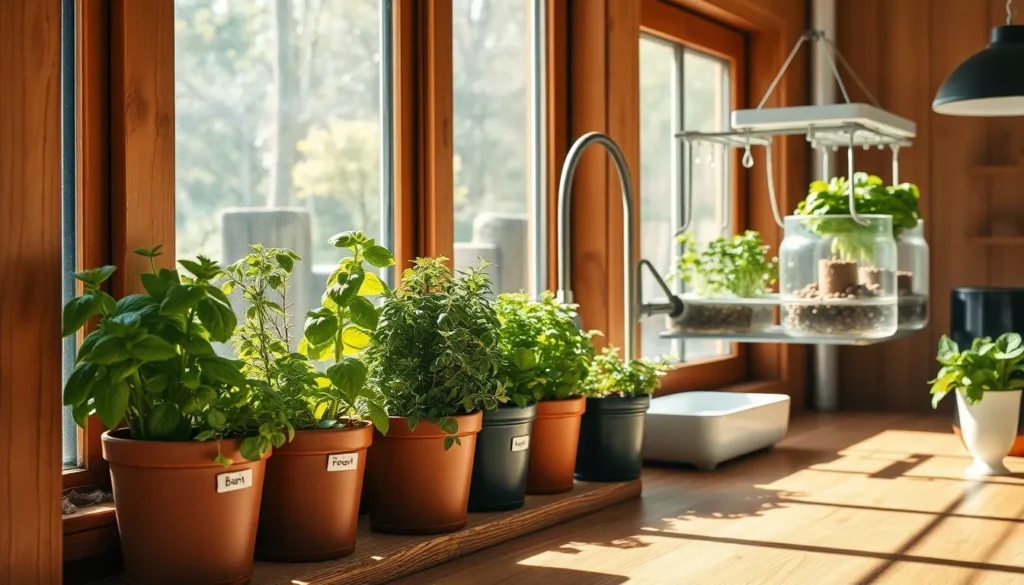Imagine stepping into your kitchen, where the vibrant aroma of fresh basil, rosemary, and mint fills the air, even in the dead of winter. Growing herbs indoors year-round isn’t just a rewarding hobby; it’s a practical way to bring flavor and health to your meals while nurturing your green thumb. Whether you’re a novice gardener wondering where to begin or a seasoned planter looking to expand your indoor garden, the world of indoor herb gardening offers a rich tapestry of experiences and benefits. With the right guidance, you can transform your home into a lush oasis of culinary inspiration, regardless of the season outside.
For those just starting, this article will demystify the essentials of indoor herb gardening, from selecting the right containers to understanding lighting needs. Experienced gardeners will find valuable tips for optimizing growth and exploring lesser-known herb varieties that thrive indoors. Together, we’ll delve into the nuances of care, ensuring your plants are not only surviving but flourishing. By the end, you’ll be equipped with the knowledge to cultivate a thriving indoor herb garden that brings joy and fresh flavors to your life every single day.
Select Suitable Herb Varieties
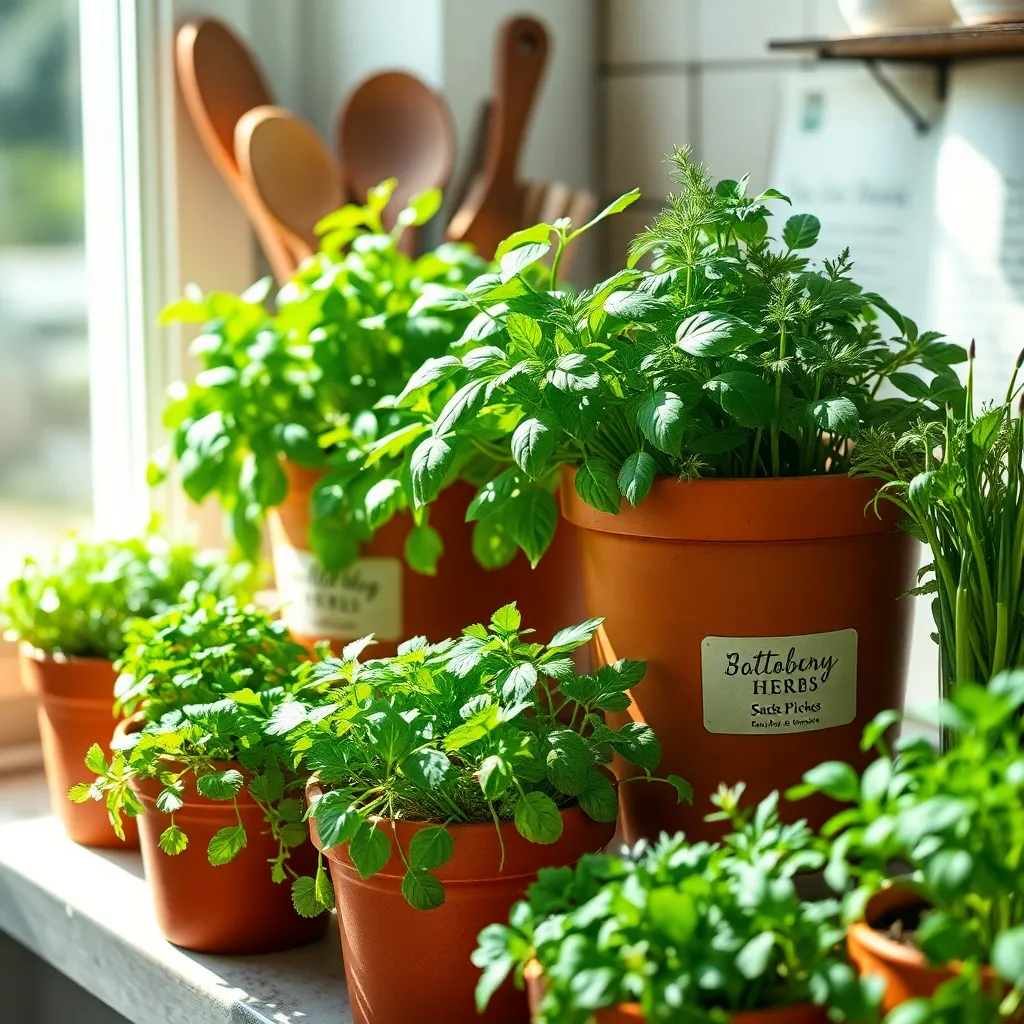
When selecting herb varieties for indoor growth, consider the space available and the amount of sunlight your home receives. Opt for compact varieties like basil, mint, and chives, which thrive in smaller spaces and require minimal sunlight.
It’s essential to choose herbs that align with your cooking preferences to ensure you use what you grow. For culinary versatility, consider planting thyme, parsley, or cilantro, which can be used in a wide range of dishes.
Consider the light requirements of each herb when planning your indoor garden. Herbs such as rosemary and sage need ample sunlight, ideally six to eight hours a day, while mint can tolerate lower light levels.
For those with limited sunlight, supplement with grow lights to ensure your herbs receive adequate light. Positioning herbs on south-facing windowsills can also maximize natural light exposure, crucial for healthy growth.
Pay attention to the soil and watering needs of your chosen herbs to maintain their health. Use a well-draining potting mix and ensure pots have drainage holes to prevent waterlogging, which can lead to root rot.
Avoid overwatering by checking the soil moisture level with your finger; water only when the top inch feels dry. Herbs like oregano and thyme prefer drier conditions, while basil and parsley need more consistent moisture.
Prepare Indoor Growing Containers
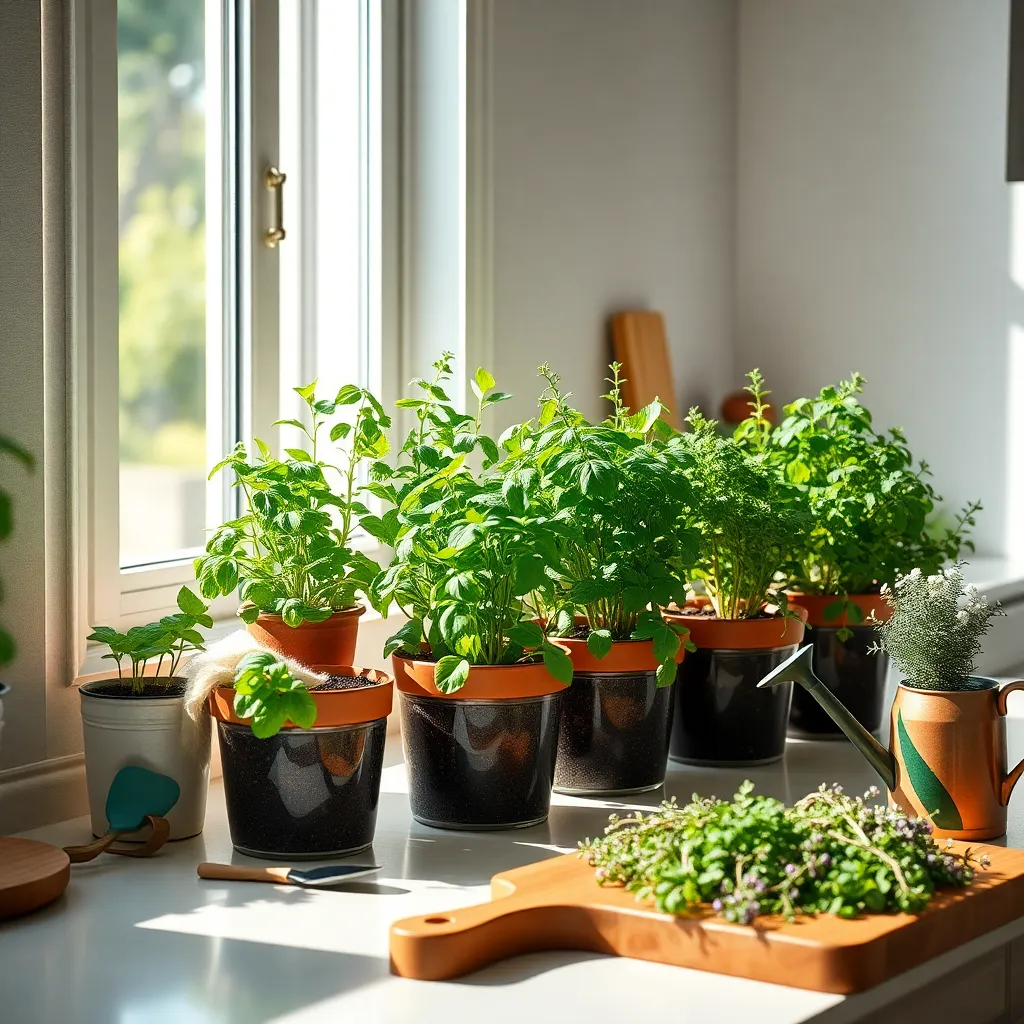
To successfully grow herbs indoors year-round, it’s essential to start with the right containers. Choose pots that have adequate drainage holes to prevent waterlogging, as herbs hate having their roots sit in water.
Consider the size of your chosen herbs when selecting containers, as this will influence their growth. Smaller herbs like chives and thyme can thrive in smaller pots, while larger herbs like rosemary and mint may need more room to grow.
Use a high-quality potting mix specifically designed for container plants to ensure good drainage and root health. Adding a layer of small rocks or gravel at the bottom of the pot can further enhance drainage and prevent root rot.
For those looking to optimize plant health, consider incorporating a slow-release organic fertilizer into your potting mix. This will provide a steady supply of nutrients, encouraging robust herb growth and making maintenance easier for busy gardeners.
Ensure Optimal Light Conditions

Ensuring optimal light conditions is crucial for growing healthy herbs indoors year-round. Begin by placing your herbs near a south-facing window, which typically provides the most sunlight throughout the day.
If natural light is insufficient, consider investing in grow lights to supplement your herbs’ lighting needs. LED grow lights are energy-efficient and can be adjusted to provide the optimal spectrum of light for photosynthesis.
It’s essential to understand that different herbs have varying light requirements. For instance, basil and rosemary thrive in bright, direct sunlight, while mint and parsley can tolerate lower light conditions.
Rotate your herb pots regularly to ensure even light exposure, which helps prevent plants from leaning toward the light source. This simple practice encourages uniform growth and healthier plants.
For advanced gardeners, using a light meter can help you measure the exact amount of light your herbs are receiving. This tool ensures that each plant gets the precise amount of light it needs for optimal growth.
Maintain Consistent Watering Schedule
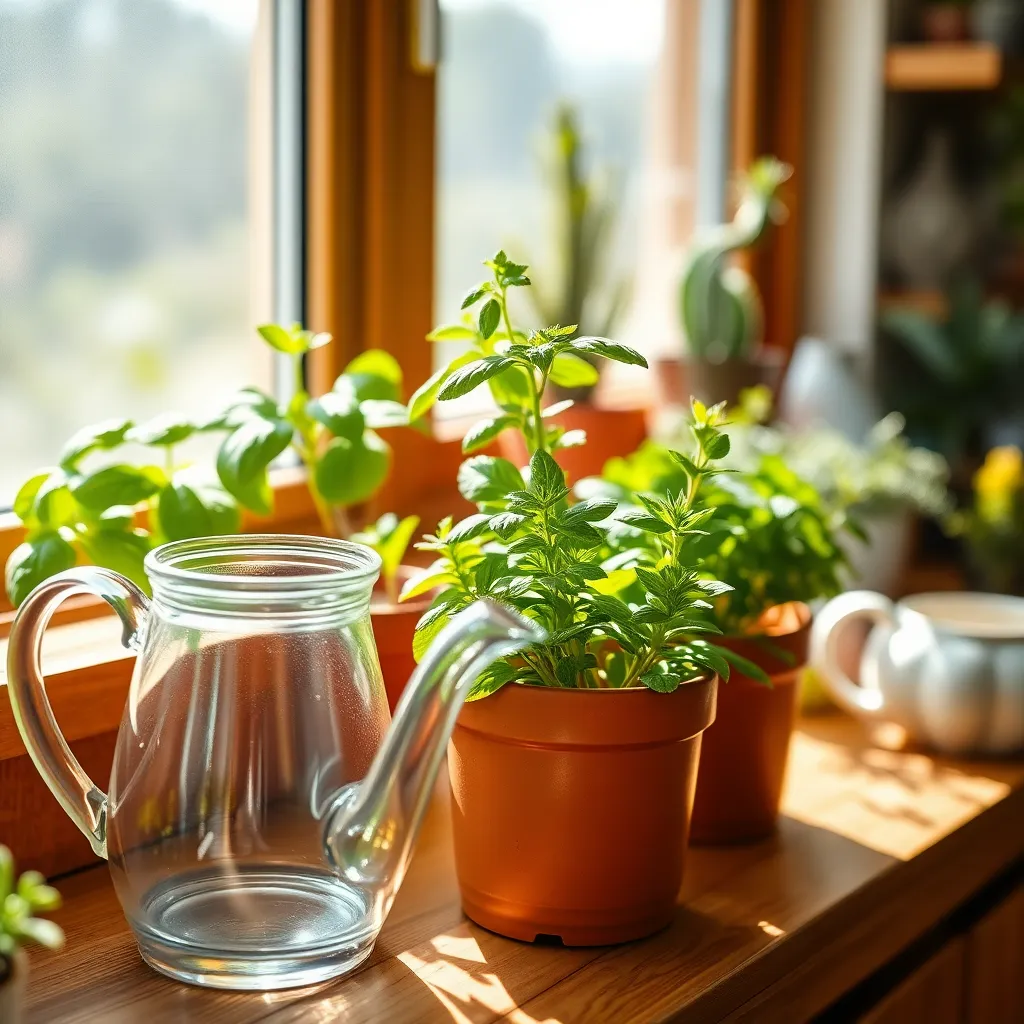
Maintaining a consistent watering schedule is crucial for growing healthy herbs indoors. Many indoor herbs, such as basil and mint, thrive when their soil remains slightly moist but never waterlogged. To achieve this balance, it is important to water your herbs with room-temperature water whenever the top inch of soil feels dry to the touch. This ensures that your plants have access to moisture without the risk of root rot.
Investing in a high-quality soil mix with excellent drainage can make a significant difference. Look for a potting mix specifically designed for herbs or indoor plants, which typically contains components like perlite or vermiculite to improve aeration. In addition, using pots with drainage holes is essential to prevent water from accumulating at the bottom. This simple setup helps maintain the ideal moisture level for your herbs, reducing the likelihood of overwatering.
Understanding the specific needs of each herb can further optimize your watering routine. For instance, Mediterranean herbs such as rosemary and thyme prefer drier conditions and should be watered less frequently. On the other hand, herbs like parsley and cilantro require more consistent moisture, so you may need to water them more often. Tailoring your approach based on the type of herb will help you cultivate a thriving indoor garden.
As you develop your watering schedule, consider the indoor climate and seasonality. During warmer months or in homes with dry air, herbs may require more frequent watering. Conversely, during cooler months, less frequent watering may be necessary. Adjusting your watering practices according to environmental conditions will help ensure your herbs remain healthy throughout the year.
Regularly Prune and Harvest Herbs
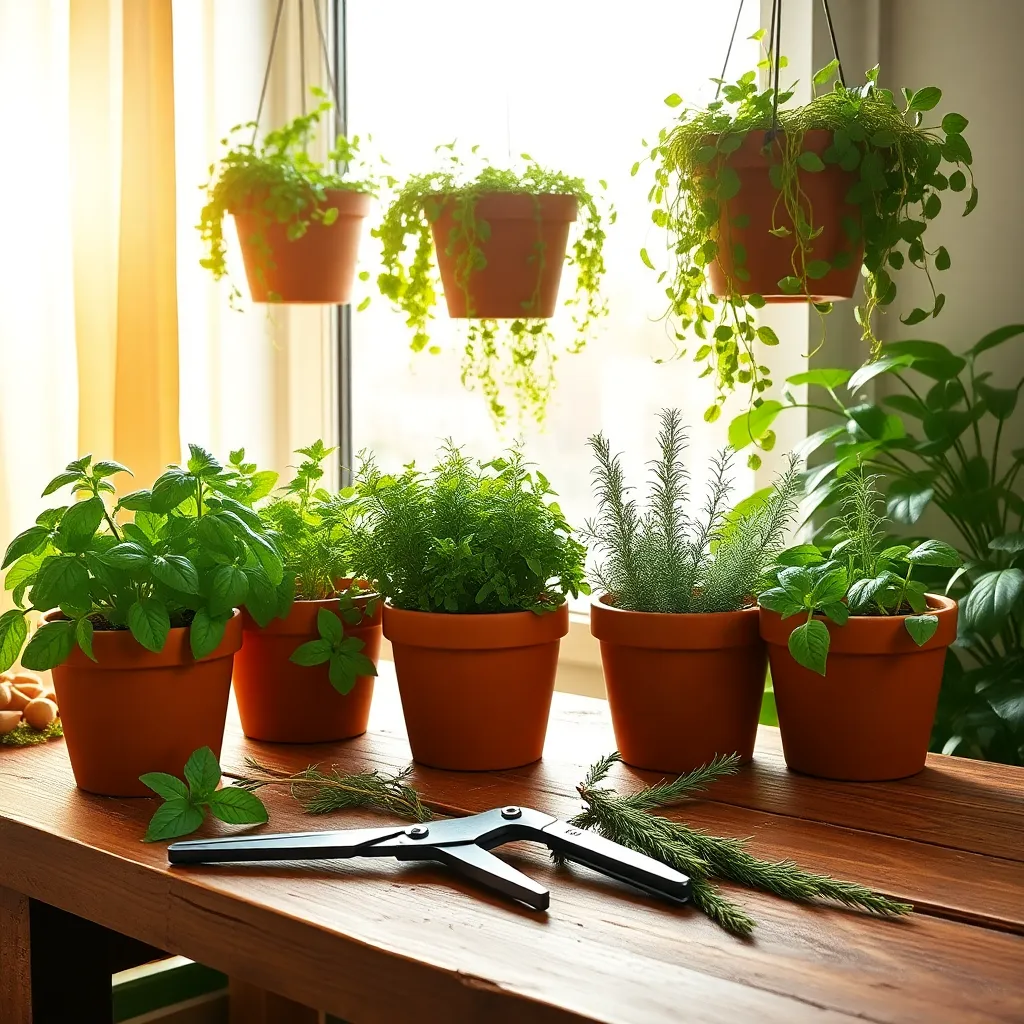
Regular pruning is essential for healthy herb growth and ensures your plants remain productive. By trimming your herbs frequently, you encourage the plants to become bushier and prevent them from becoming leggy.
For beginners, a simple rule of thumb is to never remove more than one-third of the plant at a time. This practice allows the plant to recover quickly and continue producing new growth.
Advanced gardeners know that pruning should be done in the morning when the herbs are most hydrated, which helps prevent shock. Use a pair of sharp, clean scissors or pruning shears to make clean cuts, reducing the risk of disease.
Harvesting herbs regularly is just as important as pruning. Picking leaves frequently can help maintain the plant’s vigor and promote continuous growth.
To maximize flavor, harvest herbs just before they flower, as this is when their essential oils are most concentrated. Basil, for instance, should be pinched back to just above a leaf pair to encourage robust growth.
For long-term storage, consider drying or freezing your herbs. This allows you to enjoy their flavors year-round, even when they’re not actively growing indoors.
Conclusion: Growing Success with These Plants
In nurturing your indoor herb garden, you’ve explored five key relationship concepts that can enrich your connections with those you hold dear. First, the importance of consistent care mirrors the need for regular attention and effort in relationships. Second, creating the right environment highlights how setting the right emotional atmosphere fosters growth. Third, patience with growth reminds us that relationships, like herbs, flourish over time with understanding and love. Fourth, addressing issues promptly parallels the need to tackle misunderstandings before they become deep-rooted. Lastly, celebrating small successes teaches us to cherish the everyday moments that strengthen our bonds.
As an immediate step, choose one relationship in your life to nurture just like you would your herbs. Dedicate time today to check in, listen, and show appreciation. For future guidance, save or bookmark this article to revisit these insights whenever you need a gentle reminder of the parallels between tending to your garden and your relationships.
Embrace the journey toward relationship success by applying these principles, and watch as your connections blossom with renewed vitality and joy. Your relationships, like a thriving indoor herb garden, have the potential to flourish year-round with thoughtful care.

